- Home
- Mack Maloney
Battle at Zero Point s-4
Battle at Zero Point s-4 Read online
Battle at Zero Point
( Starhawk - 4 )
Mack Maloney
Fourth in the new series from the author of the Wingman novels and the Chopper Ops series.
The year is 7202 A.D., and man of mystery, gifted military strategist, superb pilot, and charismatic leader Hawk Hunter finds himself alone during a clash with Imperial forces that could destroy the entire galaxy.
Mack Maloney
Battle at Zero Point
For those souls lost aboard the shuttle Columbia
Part One
The Battle That Never Was
1
Earth Third Month, 7202 ad.
The big air-chevy began its climb up to the floating city, shortly before dawn.
It was a cold, dreary morning. Fog had enshrouded the mile-high aeropolis known as Special Number One, and the rain had started up again. Bad weather was supposed to be a rarity on Earth these days. Its atmospherics were controlled by the Imperial Engineers, and usually they produced only warm and sunny days. Lately, though, it had been little else but dark clouds and heavy showers all around the planet.
The guards at the front gate of Special Number One spotted the air car shortly after it launched. Its dark blue color identified it as belonging to the Space Forces; its muted gold trim indicated it might be attached to one of the SF's intelligence services, though there was no way to know for sure. In any case, the guards had been told it was coming and that whoever was inside had already been cleared to enter the aerial city.
When the air-chevy arrived at the front gate, the guards simply waved it on through. It slowed down, folded in its wings, and began creeping along the winding streets of the enormous sky castle. Special Number One was home for nearly a million people. Ten square miles around, it contained thousands of ornate buildings, both old and new. Multiple spires rose from the clutter of structures at its center; long, sloping passageways crisscrossed these spires like latticework. At night, each of the towers glowed with a different iridescent color. Some of the tallest held zaser beams on their pointed tops. When illuminated, these zasers were so bright, they could be seen out beyond the Solar System.
A labyrinth of very narrow streets surrounded the middle of the city, and it was through these alleys the air car now traveled. Some of the pavements in this, the old section of the aeropolis, were so dated, they were made of cobblestones. Many of these stones had long since worn away, though, and as no one was quite sure just how to make cobblestones anymore, me streets remained cratered and pockmarked.
The air-chevy soon reached a main thoroughfare, and here the roadways became wider and glistening and new. Between each of the soaring buildings along these avenues were small forests of perfectly manicured trees and multicolored tropical gardens, sometimes surrounding shimmering reflecting pools.
Columns of Imperial Guards, wearing vividly colorful uniforms, could always be found marching up and down these middle-city streets, and this morning was no different. Weapons on shoulders, prerecorded martial music blaring, their formations followed each other so closely, they formed one long, endless parade. For many of these soldiers, this spectacle would consume their entire day. The pageantry never stopped up on Special Number One. It got tired, but it never stopped.
The air car passed several small armies of promenading soldiers and soon came in sight of the Imperial Palace itself. It was for the person who lived here that all the pomp and circumstance was about. The palace was the home of the Emperor O'Nay, Supreme Ruler of the Fourth Galactic Empire and the deified head of The Specials, the near-immortal upper class that had ruled the Milky Way for more than 500 years. Aloof to the point of nonexistence, O'Nay was rarely seen, even by members of his immediate family, and almost never heard to speak. Atop the palace was an immense tower, soaring 500 feet above everything else on die floating city, so high, clouds perpetually gathered near its peak. This is where
O'Nay could usually be found, in a small room at the top, gazing out on empty space, apparently thinking his great thoughts as the Galaxy spun around him and his pretty soldiers marched below.
The air-chevy turned right, moving away from the palace and finally settling on the edge of the city's main square. The rain had let up momentarily, and the passenger decided he would walk from here. He stepped out and straightened his uniform; the air car floated away. But then the cold rain began falling again. Bad timing, he thought. He pulled up his collar and started walking.
He was Captain Gym Bonz, Space Forces Intelligence. Six foot even and just 120 years old, he was raggedly built, with a handsome, friendly face broken only by a pair of black, steely eyes and a slightly misshapen nose. No hideously long sideburns or ground-scraping mustaches for him, though these were the fashion of the day. Bonz kept his hair cut cool and his ray-gun juice dry. He moved with the assurance of a veteran military officer. A light greenish aura surrounding him told of many trips taken in space.
Bonz was considered among the best intelligence officers in the Empire; indeed, doing intelligence work had been in his family for thousands of years. But he hadn't always been a spy. He'd started his career as a skyfighter pilot for the Space Navy, seeing his first combat during the Ninth Fringe War back in 7109. After performing well in that conflict — fought against an alliance of space pirates known as the Blackships— he'd moved on to driving Starcrashers, the gigantic aerial battleships flown by the Empire's military forces. In countless actions, mostly out on the Four and Five Arms, his ships were used for both landing troops on enemy-held planets or massive orbital bombardments of the same.
Bonz quickly distinguished himself as a commander of great skill. It took talent wielding a two-mile-long spaceship around in the heat of battle, but Bonz was able to do so with ease. He also became known as a great leader of men. His piloting crew alone numbered more than 1,000, and during a combat invasion, he was responsible for up to 20,000 starship troopers riding back in his holds. He'd received so many citations and combat medals in his time at the helm, he couldn't fit them all on one uniform. In the yearly review of starship officers before the Emperor, Bonz always appeared near the front of the line.
About forty years before, he'd caught the eye of Space Forces Intelligence, and most especially, an ultrasecret unit known as SF3. These deep-space superspies were the elite of the Empire's secret agents.
They were in charge of identifying potential trouble spots out on the Fringe, the catchall name for the wild and chaotic outer-galactic territory that served as the frontier for the realm. SF3 was always on the lookout for high-caliber officers who could think quickly and didn't rattle easily. Bonz fit their bill. They received permission from the Space Navy to recruit him.
Bonz turned them down, though, at least at first. He'd never seen himself as a spook. He preferred direct action against a problem; creeping around the edges just didn't appeal to him. Plus he knew intelligence work would take him away from his family for even longer periods of time than flying monstrous Starcrashers did. It took the most tragic event of his life to change his mind.
He'd moved his family from their home on Saturn's Titan to a military settlement closer to the Fringe called Boomtown 52. Also known as B-52, the three-star system was located at the bottom of the Four Arm, the fourth major spiral of the Milky Way. It was considered a secure place against the hordes of space pirates who were perpetually causing havoc further up the Arm, and Bonz had uprooted his family only so he could be closer to them between missions. It turned out to be a horrible mistake. While on an operation several hundred light-years away, an army of pirates raided B-52, immolating one planet and pillaging the other two. Bonz's beautiful wife and his two young daughters were killed.
That had been thirty-
eight years ago. It took him almost ten years to get past the grief. The Space Navy sent him to a desk job close in to The Ball, that being the very peaceful center of the Galaxy. When he emerged from his dark place a decade later, he contacted SF3 to see if they were still interested in him. They were.
He'd been doing undercover missions for them ever since.
* * *
He walked down the long, nearly empty concourse now, the great plaza of aluminum and gold that served to divide this part of the floating city neatly in two. At one end stood the soaring, brightly lit headquarters of Space Forces Command. This was his destination.
Known as Blue Rock, the headquarters was an extremely futuristic building, climbing dozens of stories into the sky, with a jumble of moving walkways, flying bridges, and air tubes surrounding it like so many sparkling halos. This place served as the supreme operations center for the Space Forces, the largest of the Empire's holy trinity of military services. The Space Forces were the Emperor's front-line troops, nearly thirty billion regulars in all, with millions of spacecraft to get them where they needed to go.
Invading and holding hostile planets was its specialty, and its soldiers enjoyed great elan. Comprised primarily of the Navy, the Army, and the Air Service, the SF was well trained, highly motivated, and very loyal to the Emperor. And as its roots went back more than 1,000 years, its members liked to think they were the real professionals of the Empire's vast military, and for many reasons, they were.
By contrast, hanging off the floating city's northern tip was another very futuristic building, this one made entirely of black superglass. Unlike the brightness of SF's Blue Rock, it was rare to see any light at all coming from this place. This was Black Rock, the operations center for the second service of the Empire's triad: the Inner Defense Forces, also known as the Solar Guards.
Essentially, the SG were the military police of the Empire. They were mainly responsible for security within the Pluto Cloud, as the boundary of the Earth's Solar System was called. Or at least that's how it was supposed to work. Truth was, the Solar Guards could be found in just about every corner of the Galaxy these days. Though not quite hah0 as large at the SF, they still fielded nearly fifteen billion soldiers; maintained millions of precincts, outposts, and ports of call throughout the Galaxy; and had many shady mercenary armies serving in their employ as well. Their far-flung influence, built up since the SG's inception three centuries before, was in contrast to the Space Forces who, by tradition, had many of its bases, repair stations, barracks, and training facilities much closer in to Earth. This meant SF patrols were always longer and then-resources always more stretched out. Frequently, it took the SF more time to get to their destinations, while the SG, with its established presence just about everywhere in the realm, were rarely very far from the action. This disparity was one of the great ironies of the Empire.
The opposite-end location of the two headquarters atop Special Number One was no coincidence.
The SF and the SG did not get along. They used different types of weapons and flew different types of starships. They had different orders of rank and different style uniforms — the Space Forces wore blue with yellow trim, the Solar Guards wore black with red. Their missions were nothing alike. While it was the job of the Space Forces to project military policies throughout the Empire, the Solar Guards cruised the Galaxy, unencumbered by long traditions, conducting countless "investigations," some of them legitimate (like tracking down tax outlaws and criminal armies) but many of them not. SG troops were also considered more specialized and better trained man those in the Space Forces — and far more ruthless.
A difference in philosophy fueled the main conflict between the two services. The Empire was incredibly vast. As the Galaxy was 100,000 light-years across, the realm encompassed more than 100 billion star systems, upwards of 500 billion planets, and trillions of citizens — no one was sure of the exact number. Three Empires and several Dark Ages had passed since humans first left Mother Earth more than 5,000 years before. During the First Empire, which ran from about 2100 to roughly 3200 a.d., every planet in the Milky Way had been discovered, explored, terra-formed, (or puffed, to use the common term) and made part of the realm. But with three successive imperial falls, billions of these planets became lost again, their populations in upheaval, some not even realizing that they were still part of a huge Empire. Indeed, after successive waves of time and history over 5,000 years, some planets' inhabitants weren't even aware that life existed beyond their own atmospheres. The fourth and current Empire had reclaimed about 85 percent of the Milky Way during its reign, and the process continued unabated. The Empire's starships and soldiers were still investing planets, bringing them back under the imperial rule, whether they liked it or not, at a rate of about 1,000 a day. This is where the clash in doctrine between the SF and the SG came in.
The SG believed the Empire's best path to success was to reclaim as many of these worlds as possible, as quickly as possible, no matter what the means. This included invading unsuspecting planets without prior warning, a hugely traumatic event for the inhabitants of the unlucky world. The Space Forces were dedicated to the same goal of reclamation but believed the best way to accomplish it was to go after the troublesome planets first — those millions of worlds inhabited by pirates, criminals, tax dictators, and other interstellar low-lifes — and bring the more peaceful, law-abiding planets back in gradually.
So, it was not a question of expansion — that was everybody's objective — it was how quickly and humanely that expansion should be carried out. It seemed to be such a simple point really, but it was the dividing line between the two enormous military branches, one just as wide as the concourse that separated them up here on Special Number One. No one in the Imperial Court dared favor one service over the other, at least not in the light of day, and Emperor O'Nay was characteristically mute on the subject.
So the SG conducted their own reclaiming operations— most times on very flimsy criminal evidence — and the SF conducted theirs. Thus, the SG fought its own wars and the SF fought theirs. Not once in their combined history had the two services joined forces and fought side by side against a common enemy.
In fact, more than a few times of the past three centuries, they'd come close to trading shots themselves.
None of this would be of any help for what was about to come.
* * *
The Fourth Empire was in turmoil, perhaps the worst since its rise to power 500 years ago. Things started going wrong about a month before, when an army of mysterious invaders suddenly swept down the Two Arm, the second of the nine major swirls that, along with the Ball, made up the Milky Way.
Though the Empire had been at war for centuries with space pirates, outlaw mere armies and other space trash out on the Fringe, the realm itself had never been invaded before. Even worse, no one had any real idea who the invaders were. They had appeared as if from nowhere farther up the Two Arm and, despite their relatively small numbers, had created widespread panic in that part of the Galaxy, causing a flood of refugees in the sector that had still not slowed down.
For a while, it even seemed the invaders were heading for Earth itself. The Empire's Starcrasher warships traveled in the Seventh Dimension at speeds reaching two light-years a minute. This made a trip to the far end of the Galaxy possible in less than a month. Earth, on the odier hand, was located about two-thirds of the way out on the One Arm. Thus, the Two Arm was only a few days' travel away.
When news got around that the invaders had managed to steal six Supertime-capable cargo ships, a shock wave went through die Empire. The enemy was only forty-eight hours away from the mother world! The crisis produced enough concern that O'Nay was forced to cancel the Earth Race, die centuries-old contest that was the most important social and political event in the realm. That had never happened before, either.
The situation out on the Two Arm seemed to resolve itself, however, after a fierce battle on a crossroads planet called Megiddo,
when the invading force, consisting of six ancient warships and the six stolen Starcrasher cargo haulers, was met head-on by a fleet of Solar Guard warships near a place called Thirty Star Pass. What happened next was still being hotly debated both inside the Imperial Court and diroughout the Empire.
Simply put, the Solar Guards claimed they destroyed the enemy and its ships. Indeed, the SG force that met the invaders was die elite Rapid Engagement Fleet, probably the best-trained, best-equipped unit in the Solar Guards. The REF boasted three times as many vessels as the invaders, plus it had been armed with specially adapted antistarship weapons designed to home in on the stolen cargo 'crashers control circuits. When the battle was joined, the half-dozen stolen cargo ships were annihilated first, followed quickly by the invaders' six original warships.
Or at least, that's what the Solar Guards reported to the Emperor. But even though the official SG brief on the incident had been accepted by the Imperial Court with much relief, rumors soon surfaced that the battle did not go the way the Solar Guards had claimed. In fact, some whispered that there hadn't been a battle at all, that the invaders' entire fleet had vanished just microseconds before the SG force unleashed its barrage of antistarship weapons at it.
But how could a fleet of twelve enormous warships just disappear? Strange things happened across the Galaxy every day, but few things as strange as that. The lingering doubts, bodi in the Imperial Court and on the streets of billions of planets around the Empire, had caused the SG to close ranks and become more defiant than usual. Declaring the whole matter top secret, Black Rock started issuing decrees. Any SG soldier caught talking about the "Thirty Star Pass incident" would be thrown in prison.
Any civilian found doing the same would suffer a similar fate. At one point, the SG's high commanders even considered ordering every enlisted man who'd been involved in the alleged encounter to undergo a brain wipe, this to cut down on the number of potentially loose lips. And indeed, hundreds of SG personnel who were on the periphery of the action were forced to have the painful procedure, including many lowly staff people who just happened to be on duty that day inside Black Rock.

 Strike Force Bravo s-2
Strike Force Bravo s-2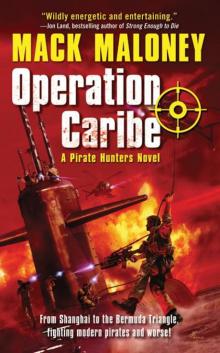 Operation Caribe ph-2
Operation Caribe ph-2 Beyond Area 51
Beyond Area 51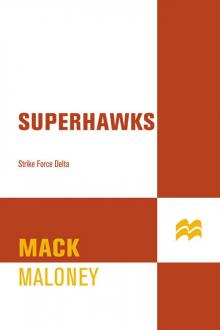 Strike Force Delta
Strike Force Delta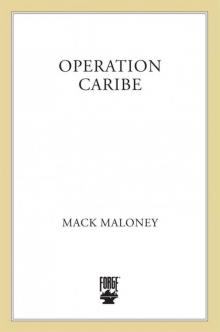 B00447820A EBOK
B00447820A EBOK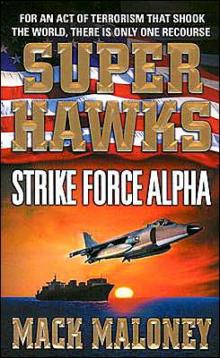 Strike Force Alpha
Strike Force Alpha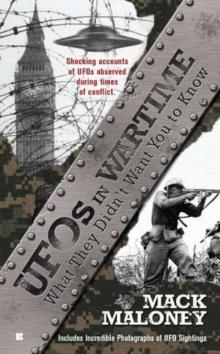 UFOs in Wartime: What They Didn't Want You To Know
UFOs in Wartime: What They Didn't Want You To Know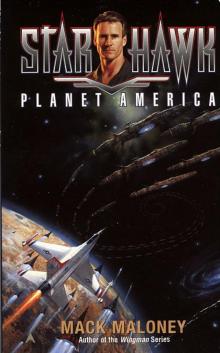 Planet America s-2
Planet America s-2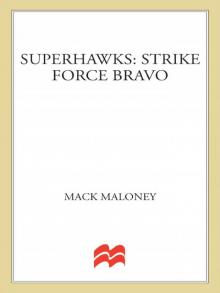 Strike Force Bravo
Strike Force Bravo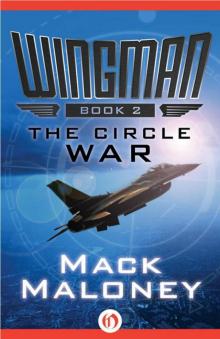 The Circle War w-2
The Circle War w-2 Operation Sea Ghost ph-3
Operation Sea Ghost ph-3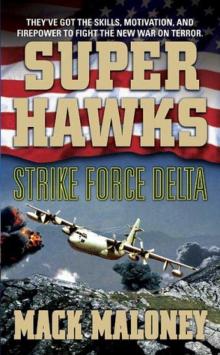 Strike Force Delta s-4
Strike Force Delta s-4 The Wingman Adventures Volume One
The Wingman Adventures Volume One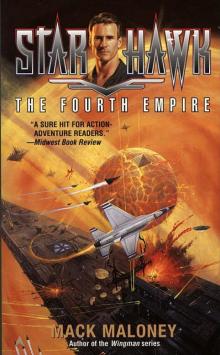 The Fourth Empire s-3
The Fourth Empire s-3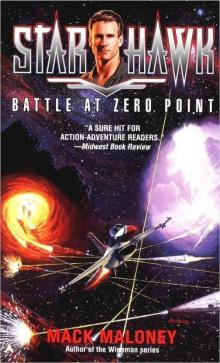 Battle at Zero Point s-4
Battle at Zero Point s-4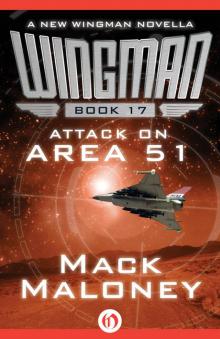 Attack on Area 51
Attack on Area 51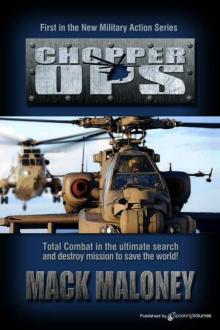 Chopper Ops
Chopper Ops B003IKHEWG EBOK
B003IKHEWG EBOK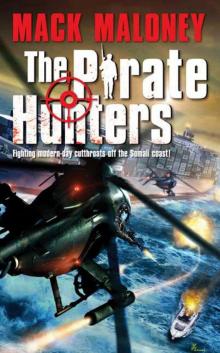 The Pirate Hunters ph-1
The Pirate Hunters ph-1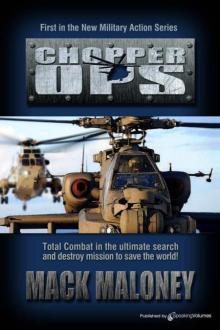 Chopper Ops co-1
Chopper Ops co-1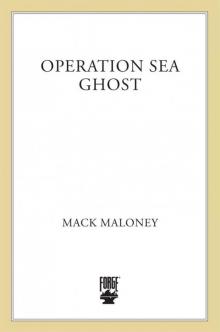 B005J4EW5G EBOK
B005J4EW5G EBOK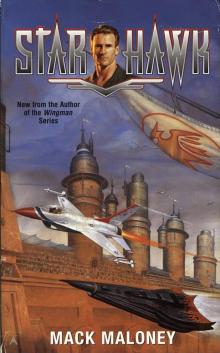 Starhawk s-1
Starhawk s-1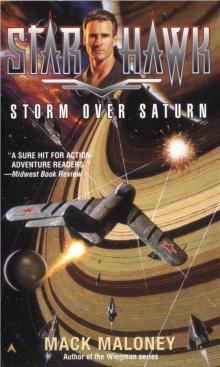 Storm Over Saturn s-5
Storm Over Saturn s-5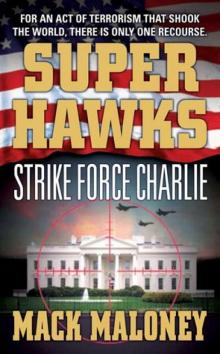 Strike Force Charlie s-3
Strike Force Charlie s-3